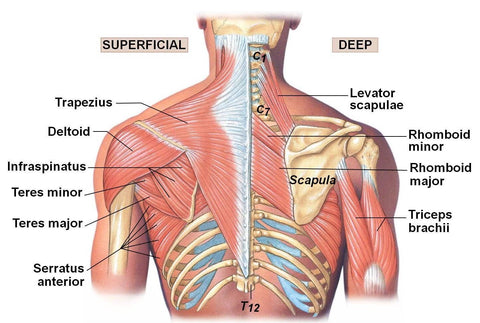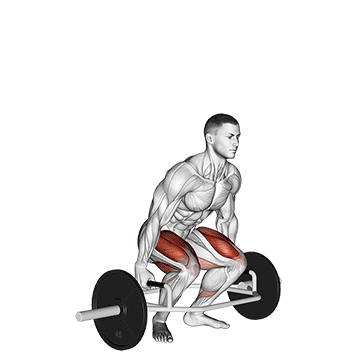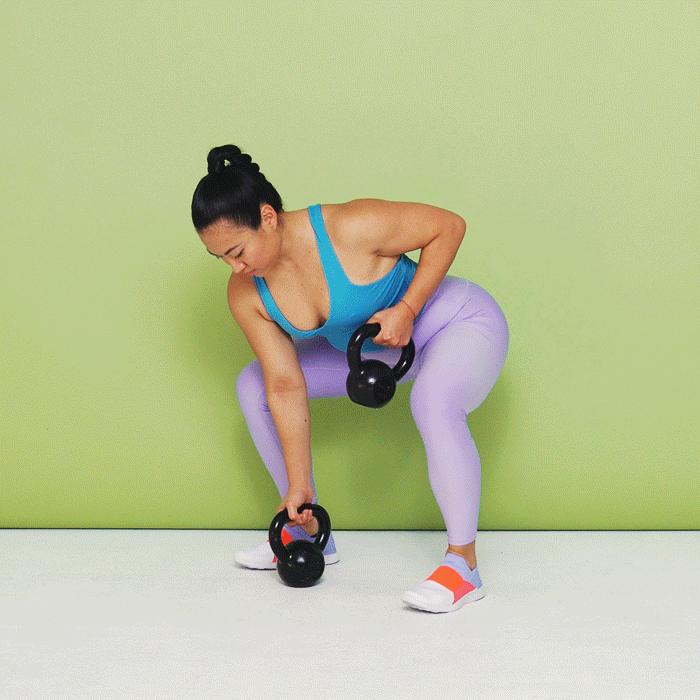In the pursuit of a strong, toned, and functional physique, women often overlook the importance of back workouts. However, incorporating targeted exercises for the back muscles can be a game-changer, not only for aesthetics but also for overall strength, posture, and injury prevention. This comprehensive guide delves into the world of back workouts for women, exploring the significance, best exercises, frequency, and expert tips to maximise your results.
Importance of Back Workouts for Women
Neglecting back workouts can lead to muscle imbalances and postural issues, potentially causing discomfort and increasing the risk of injuries. By incorporating targeted back exercises into their fitness routine, women can reap numerous benefits that contribute to overall health and well-being:
1. Improve Posture and Alleviate Back Pain
A strong back supports the spine and helps maintain proper posture. Poor posture, often exacerbated by a sedentary lifestyle or desk work, can lead to muscle tension and back pain. Strengthening the back muscles through targeted exercises such as rows and lat pulldowns can alleviate strain on the spine, improve alignment, and reduce the risk of developing chronic back pain.
2. Enhance Overall Strength and Functional Movement
The back plays a critical role in various functional movements, including lifting, bending, and twisting. Strengthening the back muscles enhances overall strength and stability, facilitating everyday activities and athletic performance. Strong back muscles also contribute to better balance and coordination.
3. Achieve a Toned and Defined Back for a Balanced Physique
Regular back workouts can help women achieve a toned and defined back, creating a balanced physique. Well-developed back muscles contribute to a sculpted upper body and enhance the appearance of other muscle groups, such as the shoulders and arms. This aesthetic benefit can boost confidence and motivation in achieving fitness goals.
4. Counteract the Effects of Prolonged Sitting or Desk Work
Many women spend prolonged periods sitting at desks or engaging in activities that promote a forward-slumped posture. This sedentary lifestyle can weaken the back muscles and contribute to muscle imbalances. Back exercises like rows and reverse flyes help counteract the negative effects of sitting by strengthening the muscles that support good posture.
5. Support Daily Activities and Prevent Potential Injuries
A strong back is essential for performing daily activities with ease and efficiency, such as carrying groceries, lifting children, or participating in recreational sports. By strengthening the back muscles, women can reduce the risk of strains or injuries during these activities. Additionally, a well-conditioned back provides essential support during workouts, reducing the likelihood of overuse injuries in other muscle groups.
Understanding the Anatomy of the Back

To fully appreciate the importance of back workouts, it's essential to understand the key muscle groups involved:
The largest back muscle, responsible for shoulder extension, adduction, and transverse extension of the vertebral column.
Comprised of upper, middle, and lower portions, this muscle plays a role in shoulder and neck movement, as well as posture.
Located between the shoulder blades, these muscles aid in scapular retraction and posture.
A group of muscles running along the spine, responsible for extension and lateral flexion of the vertebral column.
Incorporating Back Workouts into Your Routine
To maximize the benefits of back workouts and achieve a strong, toned back, women should incorporate a variety of exercises that target different muscle groups within the back. Here's how to effectively integrate back exercises into your fitness routine:
1. Choose a Variety of Back Exercises
Include exercises that target specific areas of the back, such as the latissimus dorsi (lats), rhomboids, trapezius (traps), and erector spinae muscles. This variety ensures balanced development and reduces the risk of muscle imbalances.
2. Determine Frequency and Intensity
Perform back workouts at least twice a week to allow for adequate muscle recovery and growth. Beginners should start with lighter weights and higher repetitions to focus on technique and form. As strength improves, gradually increase the weight and decrease the number of repetitions for each exercise.
3. Focus on Proper Form and Technique
Maintain proper form during each exercise to maximise effectiveness and reduce the risk of injury. Engage your core, keep your spine neutral, and avoid using momentum to lift weights. If unsure about proper form, seek guidance from a certified fitness trainer or watch instructional videos from reputable sources.
4. Warm-Up and Cool Down
Prior to starting your back workout, perform a dynamic warm-up to increase blood flow to the muscles and prepare them for exercise. A warm-up can include light cardio, dynamic stretching, and mobility drills. After your workout, cool down with static stretching to help reduce muscle soreness and promote flexibility.
5. Listen to Your Body
Pay attention to your body's signals during workouts. If you experience pain or discomfort, stop the exercise and assess your form. It's normal to feel fatigue in the muscles being worked, but sharp or sudden pain may indicate improper technique or an underlying issue.
6. Progression and Adaptation
As you become more proficient in your back workouts, aim to progressively overload the muscles by increasing weights, changing exercise variations, or adjusting the intensity of your workouts. Keep a workout log to track your progress and make informed adjustments to your routine.
Incorporating these strategies into your fitness regimen will help you develop a strong, balanced back, improve posture, and enhance overall physical performance. Consistency, proper technique, and a well-rounded approach to training are key to achieving your back workout goals effectively and safely. Always consult with a healthcare professional before starting a new exercise program, especially if you have any pre-existing health conditions or concerns..
Best Back Exercises for Women
While there are numerous exercises targeting the back muscles, some stand out as particularly effective for women.
1. Alternating Renegade Row
The alternating renegade row is a challenging compound exercise that targets the back, shoulders, and core muscles. By performing this exercise, you can improve overall upper body strength, stability, and coordination.
How to do it
- Begin in a high plank position with a dumbbell in each hand, wrists directly under shoulders, and feet slightly wider than hip-width apart for stability.
- Keeping your core engaged and hips stable, lift one dumbbell towards your hip while balancing on the opposite arm.
- Lower the dumbbell back to the ground and repeat on the other side. Alternate sides for each repetition.
2. Bent-Over Row
The bent-over row is a fundamental back exercise that primarily targets the middle back (rhomboids and latissimus dorsi) and biceps. It helps strengthen the posterior chain and promotes better posture.
How to do it
- Stand with feet shoulder-width apart, holding a barbell or dumbbells in front of your thighs with palms facing your body.
- Hinge forward at the hips, keeping your back flat and chest up until your torso is nearly parallel to the ground.
- Pull the weight(s) towards your lower ribcage, squeezing your shoulder blades together.
- Lower the weight(s) back down under control and repeat for the desired number of repetitions.
3. Reverse Flye
Reverse flyes are isolation exercises that target the rear deltoids and upper back muscles. This exercise helps balance out the shoulder muscles and improves posture by strengthening the muscles responsible for pulling the shoulders back.
How to do it
- Hold a pair of dumbbells in front of your thighs with palms facing each other, and stand with feet hip-width apart.
- Keeping a slight bend in your elbows, raise the dumbbells out to the sides until they reach shoulder height.
- Squeeze your shoulder blades together at the top of the movement, then lower the dumbbells back down with control.
4. One-Arm Dumbbell Row
The one-arm dumbbell row is an effective unilateral exercise that targets the latissimus dorsi, rhomboids, and trapezius muscles. It helps correct muscle imbalances between the left and right sides of the back.
How to do it
- Stand with feet shoulder-width apart, holding a dumbbell in one hand.
- Hinge forward at the hips, keeping your back flat and chest up, and place the opposite hand on a bench or sturdy surface for support.
- Pull the dumbbell towards your hip, retracting your shoulder blade and keeping your elbow close to your body.
- Lower the dumbbell back to the starting position in a controlled manner and repeat for the desired number of repetitions. Switch sides and repeat.
5. Upright Row
Upright rows primarily target the shoulders (deltoids) and upper back (trapezius and rhomboids). This exercise is great for building shoulder strength and improving shoulder mobility.
How to do it
- Stand with feet shoulder-width apart, holding a barbell or dumbbells in front of your thighs with palms facing your body.
- Pull the weight(s) up towards your chin, leading with your elbows and keeping them higher than your forearms.
- Lower the weight(s) back down under control and repeat for the desired number of repetitions.
6. Plank Up-Down
Plank up-downs are dynamic plank variations that challenge the core, shoulders, and chest muscles. This exercise enhances stability and coordination while strengthening the entire upper body.
How to do it
- Begin in a forearm plank position with elbows directly under shoulders and core engaged.
- Push up onto one hand, then the other, placing each hand where your elbows were, to transition to a high plank position.
- Lower back down onto your forearms one arm at a time, alternating sides with each repetition.
7. Overhead Press
The overhead press (or shoulder press) targets the deltoid muscles of the shoulders, as well as the triceps. It's an excellent compound exercise for building upper body strength and stability.
How to do it
- Stand with feet shoulder-width apart, holding a barbell or dumbbells at shoulder height with palms facing forward.
- Press the weight(s) overhead until your arms are fully extended.
- Lower the weight(s) back down to shoulder height with control and repeat for the desired number of repetitions.
8. Bird Dog Exercise
How to do it
- Begin on your hands and knees, with wrists directly under shoulders and knees under hips.
- Extend one arm forward and the opposite leg back, maintaining a straight line from head to heel.
- Hold briefly, then return to the starting position and switch sides, alternating arms and legs for each repetition.
9.Lat Pulldowns
The lat pulldown is an effective exercise for targeting the latissimus dorsi muscles (lats) and strengthening the upper back.
How to do it
- Sit on the lat pulldown machine with knees secured and feet flat on the floor.
- Grasp the wide bar with hands slightly wider than shoulder-width, palms facing away.
- Pull the bar down towards your upper chest, engaging your back muscles.
- Squeeze your shoulder blades together at the bottom of the movement.
- Pause briefly, then slowly return the bar to the starting position.
- Perform desired reps with controlled movements.
Incorporating these exercises into your workout routine can help strengthen and sculpt your back, improve posture, and enhance overall fitness. Always prioritise proper form and technique, and consult with a fitness professional if you're unsure about performing any exercise correctly or if you have any specific health concerns.
10.Russian Kettlebell Swing
The Russian Kettlebell Swing is a dynamic and effective exercise that targets multiple muscle groups, particularly the hips, glutes, hamstrings, and core.
How to do it
- Stand with feet shoulder-width apart, kettlebell on the floor in front of you.
- Hinge at your hips, grab the kettlebell with both hands, and maintain a neutral spine.
- Explosively drive hips forward to swing the kettlebell up to chest height using hip power, not arms.
- At the top, body forms a straight line from head to knees with glutes engaged.
- Allow the kettlebell to swing back down between legs, keeping core engaged and controlling the descent.
How Often Women Should Do Back Workouts?
The frequency of back workouts depends on individual fitness goals and overall programming. As a general guideline:
For general fitness and toning
- Aim to include back exercises in your routine 2-3 times per week.
- Allow for proper recovery between sessions, especially if you're new to resistance training or have a moderate fitness level.
- Regularly incorporating back workouts helps improve overall muscle tone, posture, and functional strength, contributing to a balanced fitness regimen.
For Strength and Muscle Building
- Prioritise back workouts 2-3 times per week, focusing on compound exercises that target multiple back muscles.
- Ensure at least one day of rest between back workouts to allow for muscle recovery and growth.
- Gradually increase the intensity and volume of your workouts by adding weight or adjusting sets and repetitions.
- Consistent back training stimulates muscle hypertrophy (growth), enhances strength, and contributes to a well-rounded physique.
For advanced lifters
Incorporate back exercises more frequently, sometimes splitting the workouts into upper and lower back focus.
- For experienced lifters or those with specific strength goals, consider incorporating back exercises more frequently.
- Divide back workouts into upper and lower back focus, allowing for greater volume and specialisation.
- Implement structured training cycles with varying intensities and volume to optimise muscle development and performance.
- Prioritise recovery techniques such as adequate sleep, nutrition, and active rest days to support training frequency and prevent overtraining.
Tips for Effective Back Workouts for Women
To maximise the benefits of back workouts and reduce the risk of injury, consider these expert tips:
Proper form is crucial
Engage the core, maintain a neutral spine, and control the movements.
Gradually increase resistance
Progressively overload the muscles by increasing weight or resistance over time.
Vary grip positions
Experiment with different hand positions (overhand, underhand, parallel) to target different muscle groups.
Incorporate compound exercises
Movements like rows and pulldowns engage multiple muscle groups for efficient workouts.
Focus on mind-muscle connection
Consciously engage the back muscles during each repetition for better activation and results.
Aligning Back Workouts with Women's Fitness Goals
Women's fitness goals can vary widely, from building strength and muscle to toning and improving functional fitness. Aligning back workouts with specific goals can optimise results and enhance overall fitness. Here's how back workouts can be tailored to support different fitness objectives for women:
Strength and Muscle Building
To build strength and muscle mass in the back, focus on compound exercises that engage multiple muscle groups simultaneously. Use progressive overload by gradually increasing weights over time to challenge the muscles. Allow adequate recovery between workouts to promote muscle growth and adaptation.
Toning and Definition
For toning and defining the back muscles, incorporate a higher volume of exercises with moderate weights and higher repetitions. This approach helps enhance muscle endurance and definition without significant muscle mass gain.
Functional Fitness
Functional back exercises mimic real-life movements and improve overall functional fitness. Prioritise exercises that involve pulling, lifting, and stabilising motions, which strengthen the back for everyday activities and sports performance.
Posture and Injury Prevention
To improve posture and prevent injuries, target the erector spinae, trapezius, and rhomboid muscles. Strengthening these muscles helps stabilise the spine, correct postural imbalances, and reduce the risk of back-related injuries.
By aligning back workouts with specific fitness goals, women can tailor their training regimen to achieve desired outcomes effectively. It's important to listen to your body, adjust workout intensity as needed, and consult with a fitness professional to create a personalised plan that aligns with individual goals and abilities. Consistency and commitment to proper training principles will lead to improved back strength, posture, and overall fitness.
Preventing Common Back Injuries in Women
Proper form and programming are crucial for preventing back injuries during workouts. Common back injuries in women include:
- Lower Back Strains: Often caused by improper lifting techniques or excessive spinal flexion.
- Muscle Imbalances: Weak back muscles combined with tight chest and hip muscles can lead to postural issues and pain.
- Disc Injuries: Excessive compression or twisting forces on the spine can cause disc bulges or herniation.
To mitigate these risks, prioritise core strength, maintain proper technique, and gradually increase the intensity of back workouts.
Progression and Variation in Back Workouts for Women
To continually challenge the back muscles and prevent plateaus, it's essential to incorporate progression and variation into your workouts:
- Increase Resistance: Gradually increase the weight or resistance level as your strength improves.
- Vary Grip Positions: Experiment with different hand positions to target different muscle fibers and promote balanced development.
- Incorporate Unilateral Exercises: Single-arm exercises like dumbbell rows challenge stability and address muscle imbalances.
- Modify Tempos: Slower eccentric (lowering) phases or paused repetitions can increase the time under tension for greater muscle activation.
- Change Angles and Planes: Vary the angle of pull (e.g., high, mid, low) or incorporate different movement planes to target the muscles from different directions.
Expert Advice on Designing Back Workouts for Women
Designing effective back workouts for women requires careful consideration of individual fitness levels, goals, and training preferences. Here's expert advice on crafting back-focused exercise programs tailored for women:
Assess Individual Needs
Before designing a back workout routine, assess the individual's fitness level, strength, mobility, and any specific goals or limitations. This evaluation helps customise the workout to meet individual needs and maximise results.
Focus on Compound Movements
Incorporate compound exercises that engage multiple muscle groups in the back, such as rows, pull-ups, and deadlift variations. Compound movements are efficient for building overall strength and muscle mass.
Emphasise Progressive Overload
Implement progressive overload by gradually increasing the intensity, volume, or resistance of back exercises over time. This progressive approach stimulates muscle growth and adaptation.
Include Variation and Balance
Ensure variety in back workouts by targeting different areas of the back (upper, middle, lower) with a mix of pulling and rowing exercises. Balance pulling movements (e.g., rows) with stabilising exercises (e.g., planks) to develop a strong and functional back.
Prioritise Proper Form and Technique
Focus on mastering proper form and technique to prevent injuries and optimise exercise effectiveness. Emphasise controlled movements and maintain alignment throughout each exercise.
Customise for Specific Goals
Tailor back workouts based on specific fitness goals, whether it's building strength, improving posture, enhancing athletic performance, or simply maintaining overall fitness. Adjust exercise selection and intensity accordingly.
Incorporate Recovery Strategies
Allow sufficient rest and recovery between back workouts to promote muscle repair and growth. Adequate sleep, hydration, and nutrition are essential for recovery and overall recovery.
Seek Professional Guidance
Consult with certified fitness trainers, strength coaches, or physical therapists for personalized guidance and programming. They can provide expert advice, correct technique, and modify workouts based on individual progress and feedback.
Sample Back Workout Template
Day 1: Strength Training (Upper Body - Back Focus)
Warm-Up (5-10 minutes):- Light cardio (e.g., brisk walking, jumping jacks)
- Dynamic stretches (e.g., arm circles, torso twists)
- Bent-Over Rows: 3 sets x 8-10 reps
- Lat Pulldowns: 3 sets x 10-12 reps
- Push-Ups: 3 sets x 8-12 reps
- Dumbbell Shoulder Press: 3 sets x 10-12 reps
- Plank: 2 sets x 30-60 seconds
- Cool Down (5-10 minutes):
- Static stretches for upper body (e.g., chest stretch, triceps stretch)
Day 2: Cardiovascular Exercise
Activity Options (Choose One):- 30 minutes of brisk walking or jogging
- 20 minutes of cycling or using a stationary bike
- 30 minutes of dance aerobics or Zumba
Day 3: Active Recovery (Yoga or Stretching)
Yoga or Stretching Session (30-45 minutes):- Focus on gentle yoga poses or static stretching to promote flexibility and relaxation
- Include poses that target the back, shoulders, hips, and legs
Day 4: Strength Training (Lower Body)
Warm-Up (5-10 minutes):- Light cardio (e.g., jumping jacks, high knees)
- Dynamic stretches (e.g., leg swings, hip circles)
- Squats: 3 sets x 10-12 reps
- Lunges: 3 sets x 12-15 reps per leg
- Deadlifts (or Romanian Deadlifts): 3 sets x 8-10 reps
- Calf Raises: 3 sets x 15-20 reps
- Plank Variations: 2 sets x 30-60 seconds
- Cool Down (5-10 minutes):
- Static stretches for lower body (e.g., hamstring stretch, quad stretch)
Day 5: Cardiovascular Exercise
Activity Options (Choose One):- 30 minutes of swimming or water aerobics
- 20 minutes of jump rope or high-intensity interval training (HIIT)
- 30 minutes of stair climbing or elliptical machine workout
Day 6: Full-Body Strength Training
Warm-Up (5-10 minutes):- Light cardio (e.g., marching in place, dynamic stretches)
- Pull-Ups (or Assisted Pull-Ups): 3 sets x 6-8 reps
- Push-Ups (or Modified Push-Ups): 3 sets x 8-12 reps
- Squats (Bodyweight or with Dumbbells): 3 sets x 10-12 reps
- Dumbbell Rows: 3 sets x 10-12 reps per arm
- Plank Variations: 2 sets x 30-60 seconds
- Static stretches for the entire body
Day 7: Rest and Recovery
Rest Day:- Focus on active recovery activities such as gentle walking, stretching, or foam rolling
- Allow your body to recover and prepare for the upcoming week of workouts
Conclusion
In the pursuit of a strong, toned physique, back workouts for women are often overlooked but hold significant importance. Neglecting these exercises can lead to muscle imbalances, poor posture, and an increased risk of injuries. Strengthening the back muscles through targeted exercises like rows and lat pulldowns improves posture, alleviates back pain, enhances overall strength, and supports daily activities. Understanding key muscle groups such as the latissimus dorsi, trapezius, and erector spinae is crucial for selecting effective exercises that promote balanced development and functional strength.
To maximize results, women should include a variety of back exercises targeting different muscle groups. Progressively increasing intensity, focusing on proper form, and allowing adequate recovery are essential components of effective back training. Whether the goal is strength, toning, functional fitness, or injury prevention, customizing back workouts to align with specific fitness objectives ensures optimal progress and outcomes. By prioritizing back training and staying consistent, women can improve posture, build strength, and reduce the risk of injuries, supporting a healthier and more active lifestyle.
References
- Youdas, J. W., Guck, B. R., Hebrink, R. C., Rugotzke, J. D., Madson, T. J., & Hollman, J. H. (2008). An electromyographic analysis of the Ab-Slide exercise, abdominal crunch, supine double leg thrust and side bridge in healthy young adults: implications for rehabilitation professionals. Journal of Strength and Conditioning Research, 22(6), 1939-1946. (Reference for EMG analysis of back exercises)
- Ratamess, N. A., Brent, A. A., Comtois, A. S., Contreras, B., Doan, B. K., Haff, G. G., ... & Triplett, N. T. (2021). NSCA's Essentials of Strength Training and Conditioning. (Book reference from the National Strength and Conditioning Association)
- Snarr, R. L., & Esco, M. R. (2014). Electromyographic response of the superficial musculature to unilateral and bilateral plyometric exercises. The Journal of Strength & Conditioning Research, 28(8), 2337-2342. (Reference for muscle activation during plyometric back exercises)
- Cools, A. M., Dewitte, V., Lanszweert, F., Notebaert, D., Ropars, M., Simons, E., ... & Witvrouw, E. E. (2007). Rehabilitation of scapular muscle balance. The American Journal of Sports Medicine, 35(10), 1744-1751. (Reference for exercises targeting scapular and upper back muscles)










